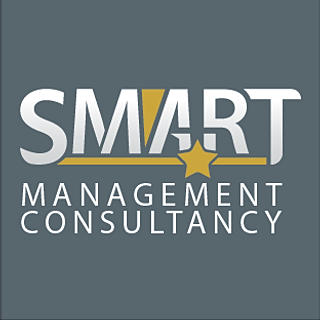Effective Tools for Managing Business Risks
- Smart Management Consultancy
- 41 minutes ago
- 4 min read
Managing risks is a critical part of running a successful business. Risks can come from many sources - financial uncertainties, legal liabilities, strategic management errors, accidents, and natural disasters. Without the right tools, businesses may struggle to identify, assess, and mitigate these risks effectively. This article explores some of the most effective business risk management tools that can help organizations safeguard their assets, reputation, and future growth.
Understanding Business Risk Management Tools
Business risk management tools are designed to help companies identify potential risks, evaluate their impact, and implement strategies to minimize or eliminate them. These tools range from software applications to frameworks and methodologies that provide structured approaches to risk assessment and control.
Using the right tools can improve decision-making, enhance compliance with regulations, and reduce unexpected losses. Here are some key types of business risk management tools:
Risk Assessment Software: These applications help in identifying and quantifying risks by analyzing data and generating reports.
Risk Registers: A simple but effective tool to document risks, their likelihood, impact, and mitigation plans.
Scenario Analysis Tools: These simulate different risk scenarios to understand potential outcomes and prepare responses.
Compliance Management Systems: Ensure that the business adheres to legal and regulatory requirements.
Insurance and Financial Hedging Tools: Protect against financial losses from specific risks.
Implementing these tools requires a clear understanding of the business environment and risk appetite. Combining multiple tools often yields the best results.

Top Business Risk Management Tools to Consider
Choosing the right business risk management tools depends on the size, industry, and specific challenges of the organization. Below are some widely used and effective tools that can be adapted to various business needs:
1. Risk Registers
A risk register is a centralized document or database that lists all identified risks, their severity, likelihood, and mitigation measures. It is a foundational tool for risk management, providing a clear overview and helping prioritize risks.
How to use it effectively:
Regularly update the register with new risks and changes in existing ones.
Assign risk owners responsible for monitoring and managing each risk.
Use it as a communication tool across departments.
2. Risk Assessment Software
Software solutions like LogicManager, RiskWatch, or Resolver automate the risk assessment process. They collect data, analyze risk factors, and generate actionable insights.
Benefits include:
Real-time risk monitoring.
Integration with other business systems.
Customizable risk scoring models.
3. Scenario Analysis and Simulation Tools
These tools allow businesses to model different risk scenarios and their potential impacts. For example, financial institutions use stress testing to evaluate how economic downturns might affect their portfolios.
Practical tips:
Use historical data to create realistic scenarios.
Involve cross-functional teams to get diverse perspectives.
Update scenarios regularly to reflect changing conditions.
4. Compliance Management Systems
Regulatory compliance is a major risk area. Tools like MetricStream or Compliance 360 help track regulatory changes, manage audits, and ensure adherence to laws.
Key features:
Automated alerts for regulatory updates.
Documentation and audit trail management.
Risk and control assessments.
5. Insurance and Hedging Instruments
Financial tools such as insurance policies, futures contracts, and options can transfer or mitigate financial risks.
Recommendations:
Conduct a cost-benefit analysis before purchasing insurance.
Work with experienced brokers to tailor coverage.
Use hedging strategies for currency, commodity, or interest rate risks.

How to Implement Business Risk Management Tools Successfully
Implementing risk management tools is not just about technology; it requires a strategic approach and organizational commitment. Here are actionable steps to ensure success:
Define Risk Management Objectives
Clarify what you want to achieve with risk management - reducing losses, improving compliance, or enhancing decision-making.
Engage Stakeholders
Involve leadership, department heads, and employees to foster a risk-aware culture.
Select Appropriate Tools
Choose tools that fit your business size, industry, and risk profile.
Train Your Team
Provide training on how to use the tools and interpret the results.
Integrate with Business Processes
Embed risk management into daily operations, planning, and reporting.
Monitor and Review
Continuously monitor risks and the effectiveness of mitigation strategies. Update tools and processes as needed.
Leveraging Technology for Enhanced Risk Management
Technology has revolutionized how businesses manage risks. Advanced analytics, artificial intelligence (AI), and cloud computing offer new capabilities:
Predictive Analytics: AI algorithms analyze patterns to predict potential risks before they occur.
Real-Time Monitoring: IoT devices and sensors provide instant data on operational risks.
Cloud-Based Platforms: Enable collaboration and access to risk data from anywhere.
Adopting these technologies can provide a competitive edge by enabling proactive risk management.
For businesses looking for comprehensive risk management solutions, partnering with specialized providers can streamline the process and ensure access to the latest tools and expertise.
Building a Resilient Business with Effective Risk Management Tools
Risk is inevitable, but its impact can be controlled. By adopting effective business risk management tools, companies can:
Identify threats early.
Make informed decisions.
Protect assets and reputation.
Comply with regulations.
Enhance operational efficiency.
Start by assessing your current risk management practices and identifying gaps. Then, explore the tools discussed here to build a robust risk management framework tailored to your business needs.
Investing time and resources in the right tools today can save your business from costly surprises tomorrow.















Comments